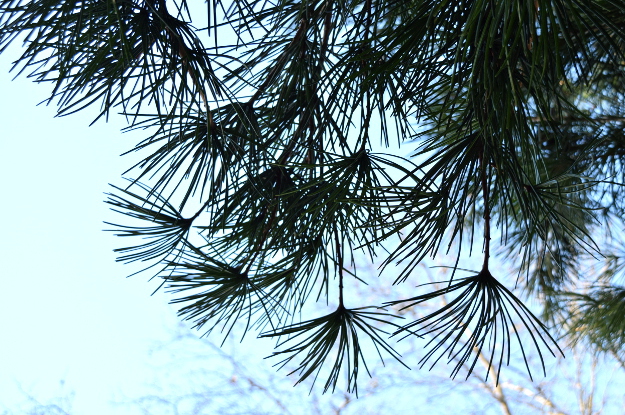
Until this winter, I only knew Japanese umbrella pine (Sciadopitys verticillata) as a handsome but dinky conifer I’d seen at garden centers selling for what could feed a family of four for a month.
Then I learned in Phyllis Reynolds’ Trees of Greater Portland (Macrophyllum Press, 2013) that Portland is home to several mature specimens and that I could see this tree in its full glory. Like a kid with a treasure map, I recently visited all four locations she listed and got a whole new perspective on this unusual and fascinating tree.
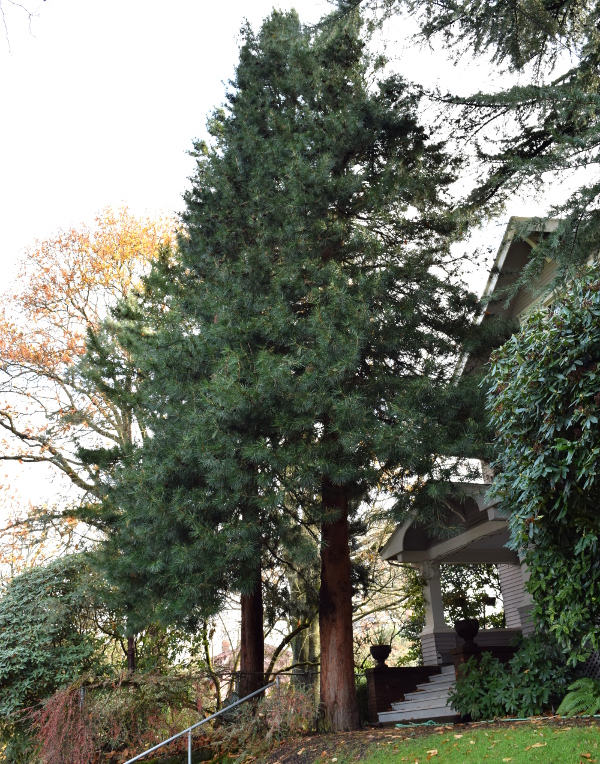
I visited this pair of trees on Northeast Thompson Street on December 6 and was floored. I’d never seen an umbrella pine taller than 4 or 5 feet, and here were two giants towering over this two-story (plus attic) house. Amazing. However, there was soon to be an unfortunate turn of events.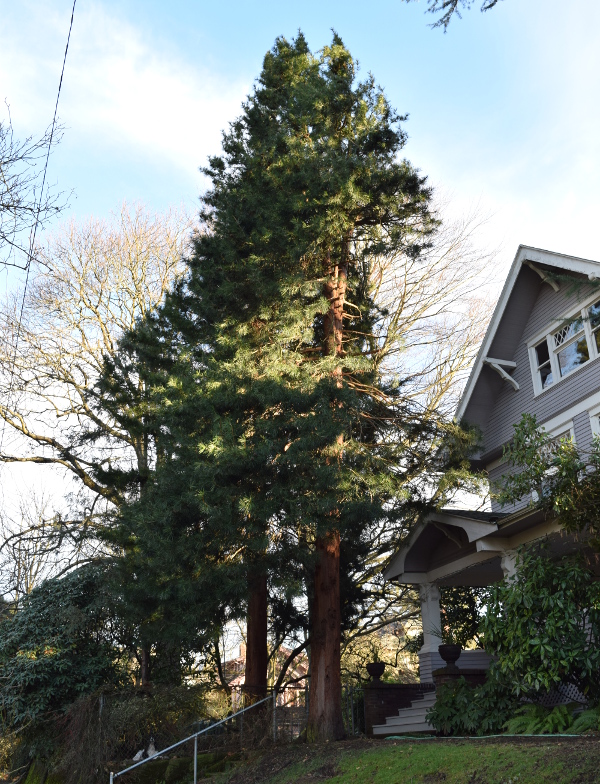
Three days after I took the previous photo, we had a hellacious storm. A deodar cedar in the neighbor’s yard lost a humongous limb, which—incredibly—missed this house, but stripped several branches off one of the umbrella pines.
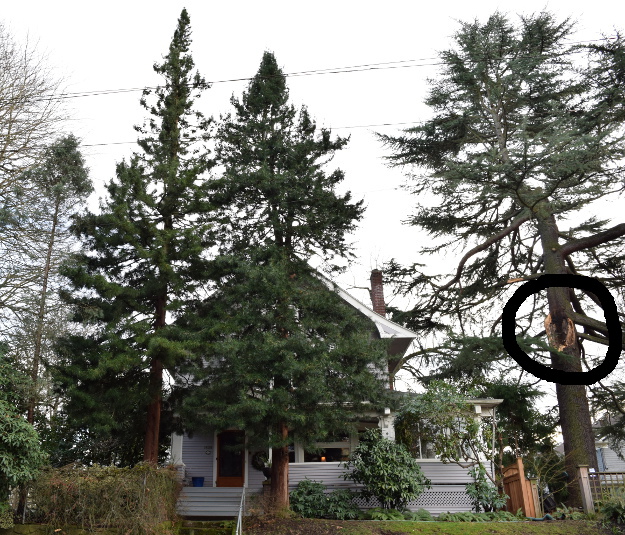
I know this because the owner of this beautiful home and these fabulous trees, Debi Madden, came out to see who the crazy lady with the camera was who was poking around her house.
She told me that the workers who removed the limb estimated that it weighed 10 tons. The 7-ton crane they brought couldn’t lift it, so they had to carve off pieces with a chainsaw until the crane could heft it out of there.
Looking at it from the street, you don’t really notice the damage, but from the west side you can see the trail of destruction. You also see what happens when a rhododendron breaks the fall of a 10-ton cedar branch. Cedar: 1, Rhododendron: 0.
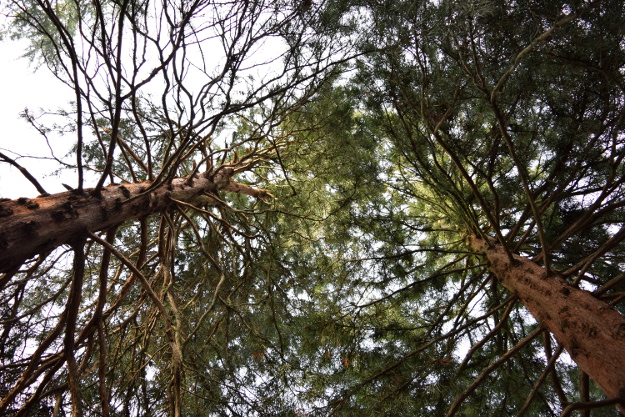
I asked Debi if the trees were a factor in buying the house 25 years ago, and she said no—and that she and her husband had thought about cutting them down when they first moved in!
When I came to, she explained that they hadn’t realized how special they were, but that they had since grown to appreciate them.

She showed me an adorable baby picture of her umbrella pines. The house was built in 1910, and the photo was taken sometime shortly after that, which makes these trees now around 110 years old.
Debi told me that at one time they had an arborist climb this tree and take a limb out, and he had had a “mystical experience” in the tree. She couldn’t quite explain it, but he wasn’t the same person when he came down. He’d trimmed a lot of trees in his day, but this one was somehow magical.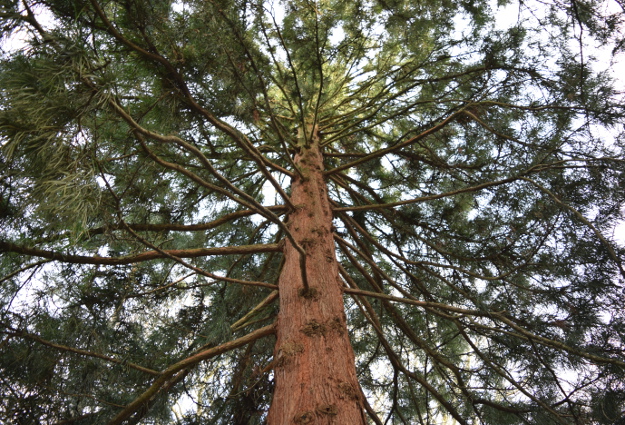
In its native Japan, umbrella pine is called koyamaki. It was once considered one of the “Five Sacred Trees of Kiso (an area near Kyoto),” which common folks were forbidden to cut down.
On Mt. Kiso today, natives buy koyamaki branches to put on loved ones’ graves. They believe that the spirits of their ancestors can return to the world of the living by grabbing onto a koyamaki branch.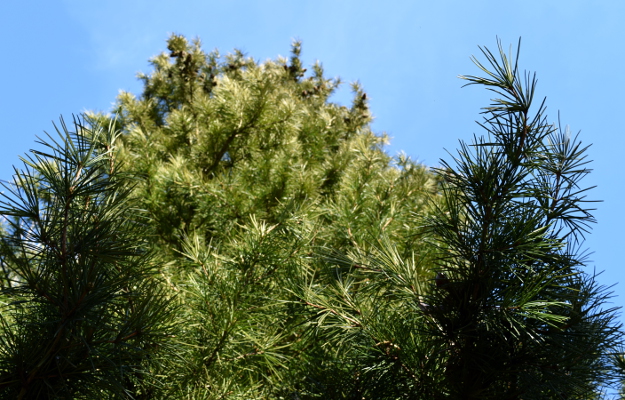
Japanese umbrella pine isn’t really a pine at all, but belongs to a family of its own, Sciadopityaceae. A living fossil, like ginkgo (Ginkgo biloba) and dawn redwood (Metasequoia glyptostroboides), it’s actually much older than either of those youngsters. Umbrella pine has existed for 230 million years—even before the dinosaurs.
It used to be found in North America and Europe; now Japan is the only place it’s found in the wild. If you can’t make it to Japan, this specimen on Northeast 20th Avenue is worth a visit. It’s branched nearly to the ground, and you can stroke the soft foliage and get a good look at it close up.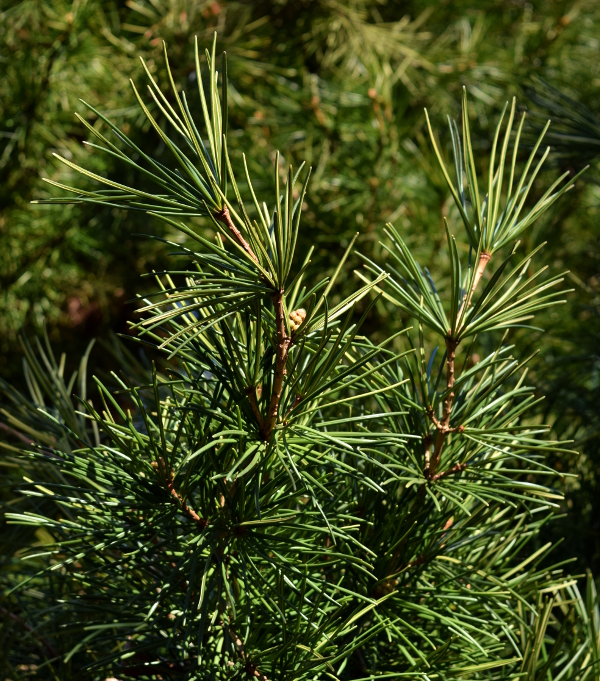
Umbrella pine gets its name from the way each bunch of evergreen needles is whorled around the stem—like the ribs of an umbrella. True pine needles are bundled into groups of two, three, or five.
The needles are flexible and glossy, and like the leaves of many fir trees, they seem to have been molded out of plastic.
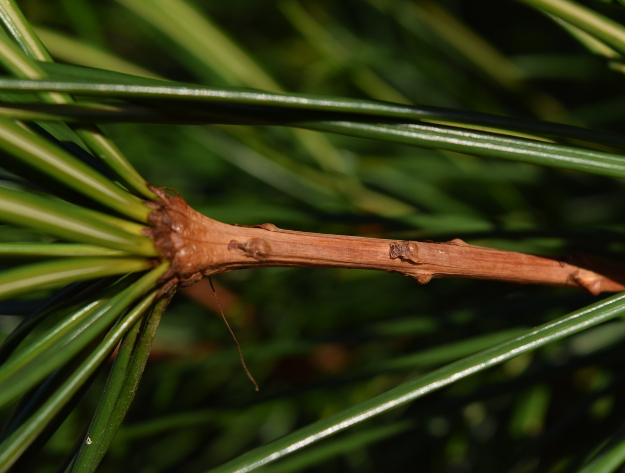
The “needles” aren’t actually leaves, but are specialized stems called cladodes. The true leaves are the little brown scales you see at the base of the cladodes and along the stem.
Fun fact: feathery asparagus “leaves” are also cladodes, as are the pads of many cacti, like Opuntia. Unless you want to be insufferable, though, I suggest you do as I do and just call what looks like foliage, foliage. I find other ways to be insufferable.
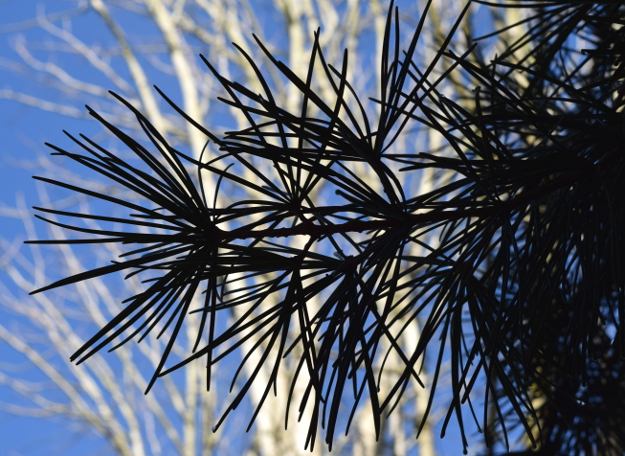
A Japanese umbrella pine can live for hundreds of years. One 90-foot tree at a Buddhist temple near Kyoto is said to have been worshipped since 1310. It’s believed to possess a female spirit, and people touch the tree in hopes that it will grant their wish for healthy children.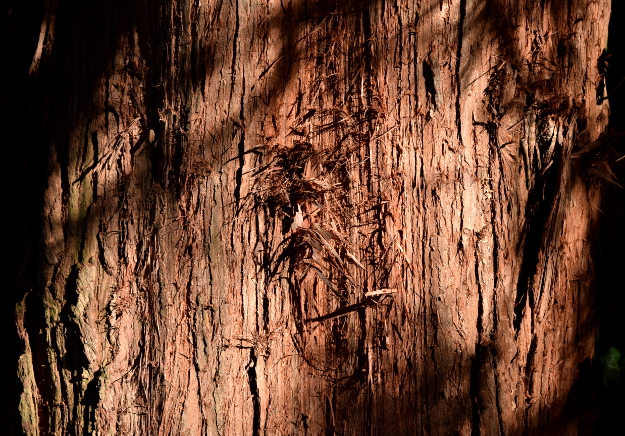
The wood of Sciadopitys is water-resistant and has been used in building boats and bridges. It’s aromatic, too, and at some posh Japanese hotels you might be able to score a luxury suite with a koyamaki bath.
The bark is variable. This tree and Debi’s two trees have showy, shredded-looking, red bark, but the other three trees I saw had more ordinary grayish-tan bark. They’re all about the same age, I would guess.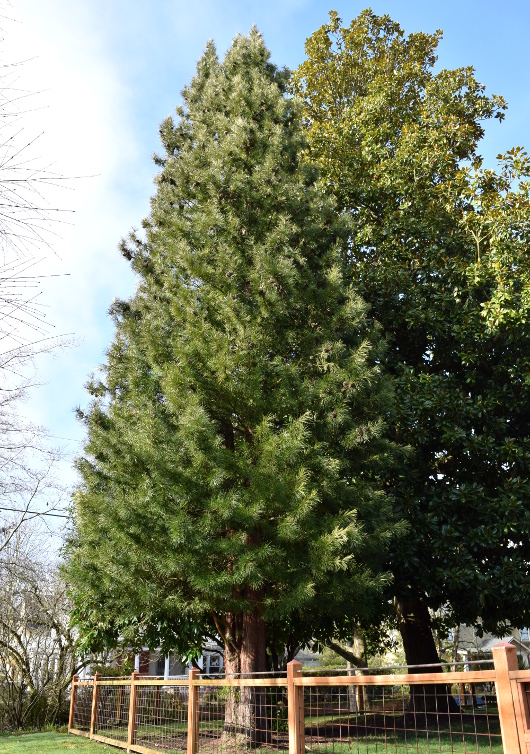
This umbrella tree, also on Thompson Street, was probably the lushest, healthiest-looking specimen I saw, although it would have been better to not let it develop a double leader, and it was planted a little too close to this mammoth Southern magnolia (Magnolia grandiflora).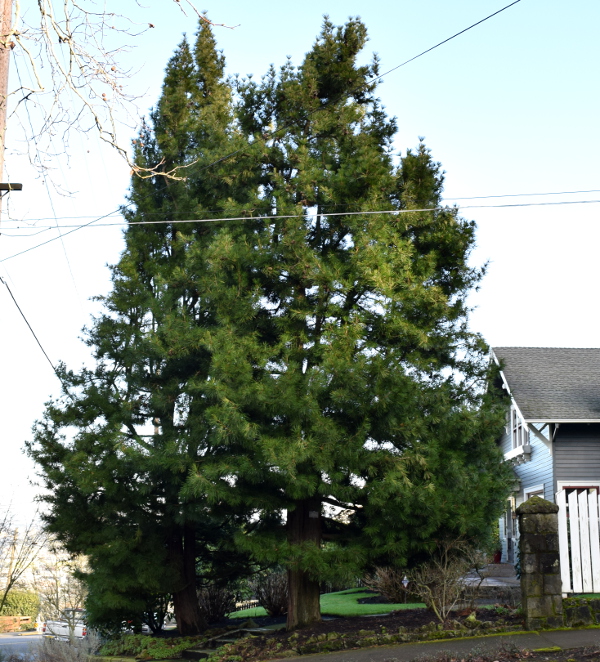
These two trees on Cornell Road in Northwest Portland were sheared when they were younger but have since grown far too big to maintain that way.
In the original edition of Trees of Greater Portland (Timber Press, 1993), Phyllis Reynolds says that during World War II, some people wanted these trees cut down because they were Japanese trees. That’s even more idiotic than “freedom” fries. Sometimes I’m embarrassed by my fellow Americans.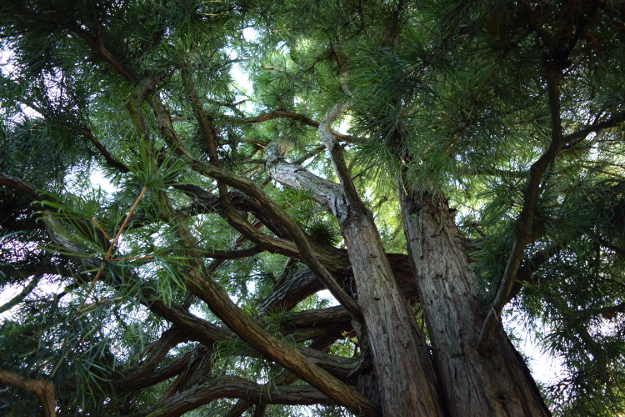
Native to “cloud forests” in the mountains of Japan, umbrella pine likes a mild climate and is hardy to Zone 5. A site offering afternoon shade and protection from wind is ideal.
It does well in the Northeast and the mid-Atlantic states, as well as in higher elevations in the Southeast. It obviously enjoys the Pacific Northwest (though we could plant pencils in the ground and expect them to root).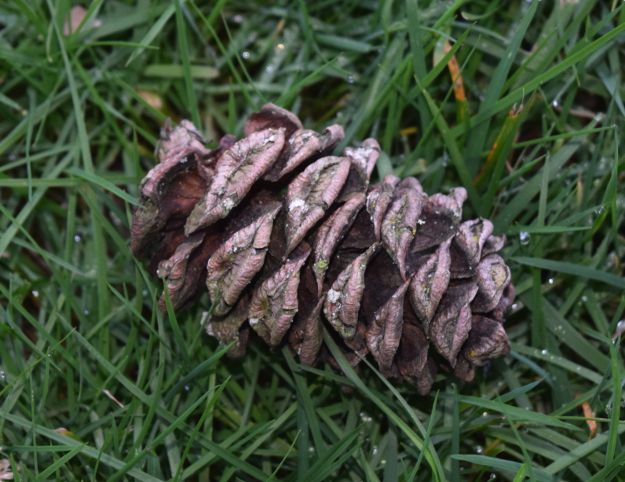
Japanese umbrella pine prefers an acid soil, which is easily accomplished in Portland. My own unamended soil tested out at a pH of 4.6, one notch above battery acid I think.
It grows very slowly, hence the hefty price tags on those peewees I’ve seen in the past. If you get more than 6 inches a year out of a Japanese umbrella pine, you’re doing well. In most cases the tree will top out at around 30 feet high by 15 feet wide, though probably not in your lifetime.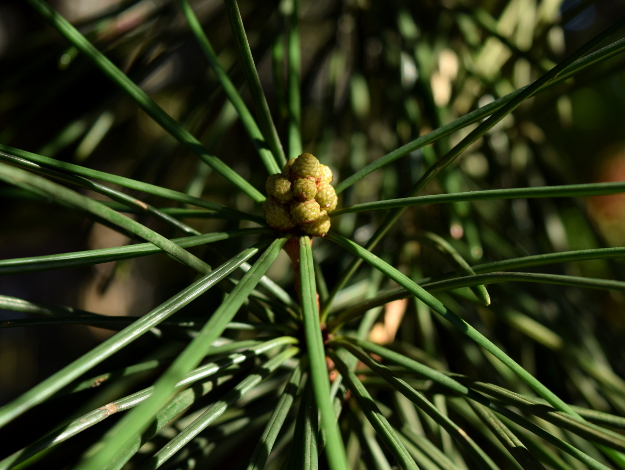
Although you may never get to see it in its full splendor, the young Japanese umbrella pine you buy today will still give you many years of enjoyment. Its unique whorled foliage will add textural drama to your garden like nothing else, and its story will entertain the many people who will ask, “What is it?”
The hardest part is working this splurge-worthy beauty into the budget. But hey, nobody ever died from eating ramen noodles for a month, did they? It’s all a matter of priorities!

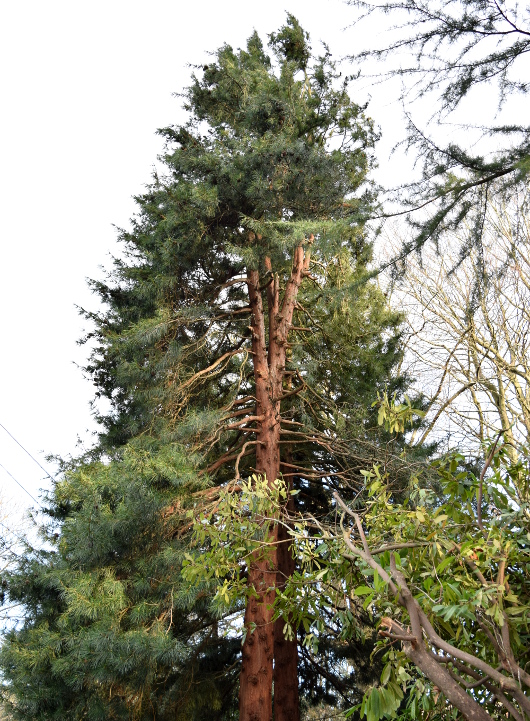
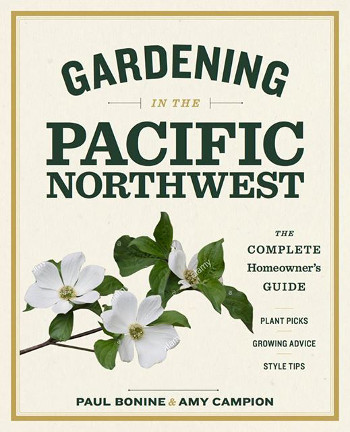























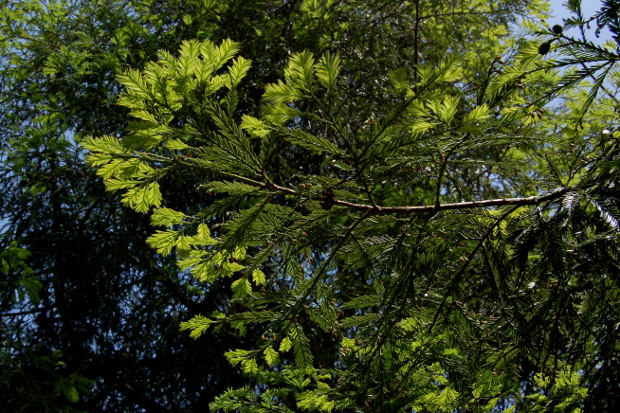


Really enjoyed the article, Amy and am yearning to see these beauties.
What interesting trees.
When I was a buyer for a garden center here in Raleigh, there was a fellow who used to propagate umbrella pines exclusively and I happily had a local source of 3 gallon plants. When he passed away, alas there wasn’t another local wholesale source anywhere. They are rare as hens teeth, at least in the east.
Tom
Tom, Glad you enjoyed it! Apparently in addition to being pokey growers, they’re slow to propagate as well. Before moving to Portland, I had only seen a few baby umbrella pines at the nursery I worked at (near Cincinnati). I would think JC Raulston would have a specimen or two, no? Thanks for commenting.
Thank’s Amy. I’ve always enjoyed Japanese Umbrella Pine but didn’t know the history. As I think back the mature specimens that I’ve seen in the Arnold Arboretum and in Highland Park have been in very sheltered spots.
Tim, It’s crazy to think it’s been around for 230 million years. Hard to get your head around that! Thanks for your input.
Great post! I’ve never seen a full size one before. Now I understand why I’d need to live off of top ramen for a month. 🙂
Laura, I don’t think Barnaby would go for that. He’d shoot you that puppy dog look and you’d cave in a second!
200 million years -230 million years, what’s the difference? A lousy 30 million years. Time flies.
Great article! They are such beautiful trees. I’m glad to know that the tiny little stick I planted way too close to the house will probably not become a problem until well after I’m gone.
Thanks, Matthew! The two pairs of trees I saw were both planted on either side of the sidewalk and aren’t a problem, so you should be good. Just leave “limbing up” instructions in your last will and testament. 😉
I came so close to buying one of these back when we first moved into our house. I had even put it into my cart, then I heard a salesperson telling another customer how BIG they get. I was scared, I put it back. Rookie mistake, I should have thought like Matthew and just planted it.
As others have said great article!
Thanks, Loree. I was just reading Dulcy Mahar’s articles, and she talks about buying an umbrella pine on impulse, then finding out how big it gets. I guess that’s the luxury of having a 3/4 acre to play in, and not a regular city lot like the rest of us. You really have to be sure of each purchase when you don’t have room for error!
I plan on buying one for my next garden, wherever that is. Thank you for sharing, Amy – I really enjoyed this post and the history of this wonderful tree. I will seek them out in Portland, now and Debi will find another crazy lady out in front of her home.
Oh, Tamara, what have I started? Sorry, Debi! Haha, I’m sure she won’t mind. Thank you for taking the time to comment and I hope your next garden is half as beautiful as your current one!
Great post! Like Matthew, I planted mine too close to my house, but by the sounds of it, I will have plenty of time to move it before it gets too big. I might even bring it along when we move to that bigger lot we keep dreaming of…
Anna, Margaret Roach has a great article about Sciadopitys and how she took hers with her when she moved, too. It’s doing fine! http://www.awaytogarden.com/beloved-conifer-japanese-umbrella-pine/
A heart-felt article, and I too felt I was there with you the whole time. Just ran across a specimen for sale here in Romania, and thought I should browse the Internet, when I found your piece. Now, I realize I will be long gone when this beauty will take to the sky; however, these 110 year old beauties you showed made up for this part somewhat. Seeing the figure of these quarter-billion year old trees makes one understand and even feel the passage of time better. After all, in this day and age when consumerism destroys everything, when time is lived second by second, this is a welcome change.
Thank you for your comment! It is a pleasure to share these beauties with people who can appreciate how special they are.
An update of my Japanese pine tree: I set it up in my front garden about 2 months ago: it is indeed a special tree. Thus far, it has grown a little under 6 inches, which to be honest, it kinda worries me- isn’t it a little too far too fast?
Nope, that’s sounds great!
Well, thank you! As about 80% of the decision to plant it is due to your blog, you could say you are the godmother of this little one! Cheers!
Oh, you made my day! Godmother of a tree–I love it!
Hello…My umbrella pine is now 15 feet tall, it was 3′ tall when I bought it 20 years ago. Alas we are afraid we will lose it this year as it has developed what I can only describe as a sunburn. All of the needles have turned a rusty brown. There are no insects and we haven’t found where it has been damaged in anyway. It seemed to happen over a few short weeks. Our local garden shop thinks maybe something has attacked the roots.
We are doing whatever we can to save it, which is how I got to your article, looking for info on what might be the causing our problem. I enjoyed the pictures and article. We are in northeast Pennsylvania.
So sorry to hear that… it does not sound promising. It does sound like a root problem. Was there any root disturbance, construction around the tree, mounding up of soil or mulch around the trunk? Animals tunneling under the tree? Too much or too little rain this year? Or possible herbicide drift? I would call in a certified arborist to look at it–definitely worth it for a specimen like that. You may want to also do a search for the American Conifer Society and see if there is a group that is active in your area. They are extremely knowledgeable folks who could help you out or at least recommend a good arborist. Good luck!
How I love these trees when I spotted it at a local nursery! I just committed a month worth of feeding my family to purchase on. On its way to our house this week. I envision looking outside my front door and seeing it each day. Now that I bought, I really hope it will adapt well to my clay-based soil. Am in Maryland nearer to D.C. Any advices for this novice but lover of umbrella pines?
Thank you for your article and any advise you may be able to provide. Like Leslie and John above, I planted a 2′ tree twenty years ago and after about five years and maybe 8 “of additional growth, I moved it from a low lit south east location to a north east spot at the front corner of the house that also gets early mid day sun. It took off and is now at least 18′ in height. It’s grown so fast that I’ve missed cutting away multiple leaders several years ago with are now about 1.5 to 2” in diameter, two are winding and all three start 3 to 4′ from the top. This past month in severe weather the tree tipped and is leaning maybe 20%. Doesn’t want to readjust with a strong pull. Not sure if I should remove the top 4′ where the cluster of leaders started or cut all the leaders back but one? Any advise for readjusting the tilt? Thank you
If it were me I would probably cut it back to one leader and try to stake it or splint it to get it straight again, but it’s hard to say without looking at it. I think you should really have an arborist look at it, preferably a certified arborist–they are certified by the ISA and really know their stuff.
Many years ago, I began growing these from seed. I had, at one time, over 10,000 plants.I saved the best for me here..about eight plants..one is a true weeper….it needs staking….., one is fastigiate, three with very strong close growth, dark green.compact.habit and one is a gold needled form one that I gave to a friend……The last is the largest is about 35 feet tall and you can not see through it..I personally , without a machine , moved a 16 foot tall plant…It took about four years for it to recover and is as dense and tight needled as they come…
I recently visited Italian Rose Garden in the Lynch Park, Beverly, MA, and made a few pics of the trees in the park and rose garden. Two of them had bark and cones (I found a few on the ground) resembling sequoia, and long, smooth individual needles, like fir. PictureThis app couldn’t identify these trees, and it took me some time to find out, who they are. I wasn’t even able to determine, which group of conifers they belong to! 🙂
And then I came across your beautiful article. Two trees in the Rose Garden look very similar to the trees you found. They were planted short time after 1910, big, but not giant.
I just saw one yesterday at Lewis and Clark College, to the left and behind Frank Manor House – at least a 30” diameter trunk! I was so excited to see it I just had to look it up and came across your article, now I have to visit the ones on Cornell and Thompson roads. Thank you for the foot work.
Cheers
Robin
I loved this article. I planted an umbrella pine 20-30 years ago, but this year it seems to be dying (dead, brown spikes on branches). I don’t want to lose it, but don’t know how to save it. I’m afraid its roots may be damaged as it’s near both my house and a paved driveway.
Do you have any suggestions for ways I can save it? It’s present home is in northern CT. Thank you!